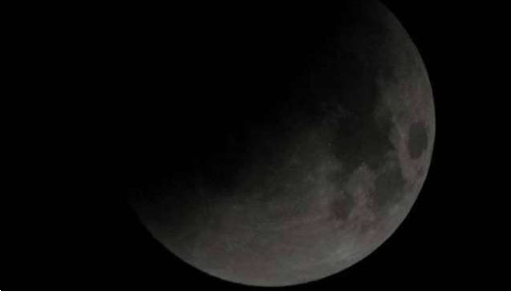New Delhi (JNN). In the month of June, both the sun and the lunar eclipse are due. While the lunar eclipse will take place on the fifth day of the first week of June, that is, on June 5, there will be a solar eclipse on June 21. Both of them have their own mythology, beliefs and significance. Apart from this, both of them also have scientific significance. Here we are giving you information about both these importance and the reasons behind this astronomical event.
Lunar Eclipse
The lunar eclipse occurs when the Sun, Earth and Moon are in the same line. This happens when the entire moon is out and the earth comes between the sun and the moon. In such a situation, the rays of the sun do not reach the moon. Let us tell you that four lunar eclipses are to be held this year. The first of these lunar eclipses has taken place on January 1. The second is this month. The third will be in July and the fourth in November. The lunar eclipse to be held on June 5 will be shadow. This means that the moon will pass through the earth’s light shadow.
This lunar eclipse will be of 3 hours and 18 minutes. It will start at 11.15 pm on 5 June and will reach its maximum phase by 12.54 am on 6 June. It will end at 2.34 in the morning of 6 June. People from Asia, Europe, Australia and Africa can see this eclipse. Let us also tell you that due to the shadow lunar eclipse, it will be difficult to differentiate between normal moon and eclipse moon among people. This eclipse can be seen all over India. There will be no change in the size of the moon during this eclipse. During this time, the image of the moon will definitely get a bit blurred and it will look a bit muddy. The reason for this is that it is not an actual lunar eclipse, it is a shadow lunar eclipse. Earlier, on January 10, a similar lunar eclipse occurred.
Rahu and Ketu have influence behind lunar eclipse in Hinduism. During the churning of the sea, there was a war between the gods and the demons for getting nectar. In order to get the nectar to the gods, Lord Vishnu took the form of a beautiful girl and distributed the nectar to everyone. Meanwhile, a demon sat down among the gods. As soon as he got the nectar, then God Sun and Moon came to know about this. When he informed Lord Vishnu about this, he separated his neck from his torso with his Sudarshan Chakra. He did not die due to drinking nectar and his head and torso separated and became famous as Rahu and Ketu. Due to this event, Rahu and Ketu appear as eclipses to the Sun and Moon.
Also Read: HDFC Bank, Axis Bank gave option to not give EMI till August, you can apply this way
Before the eclipse occurs, the Moon enters the Earth’s shadow, which is called Chandra Malinya. During the lunar eclipse, the moon enters the shadow and comes out of the shadowed cone and does not enter the Bhubha which is called in English (Umbra). Therefore, at the time of shade, the moon image is only blurred, not black. This is the reason why it is called sub-shadow lunar eclipse.
This eclipse does not have the same constraints as the second eclipse. It is neither considered a sutak nor is there any prohibition of worship. Apart from this, waking up during this time is not allowed. There is no rule like not seeing it. During this time you can also have food and keep the routine as usual. The rule of donating for eclipse also does not apply to this. Despite this, let me tell you that giving donations has been a part of Indian culture since ancient times. Even though there is no compulsion to donate during the shadow lunar eclipse, it is also pleasant to imagine doing so which brings mental peace and benefits to others.


